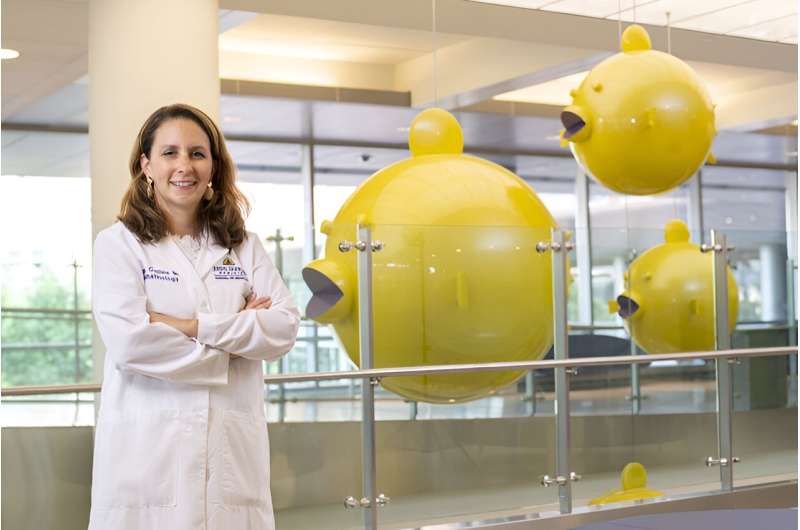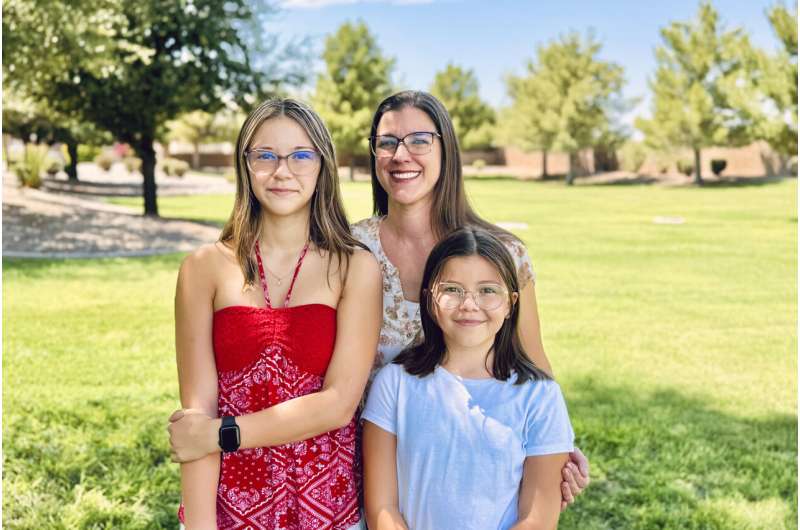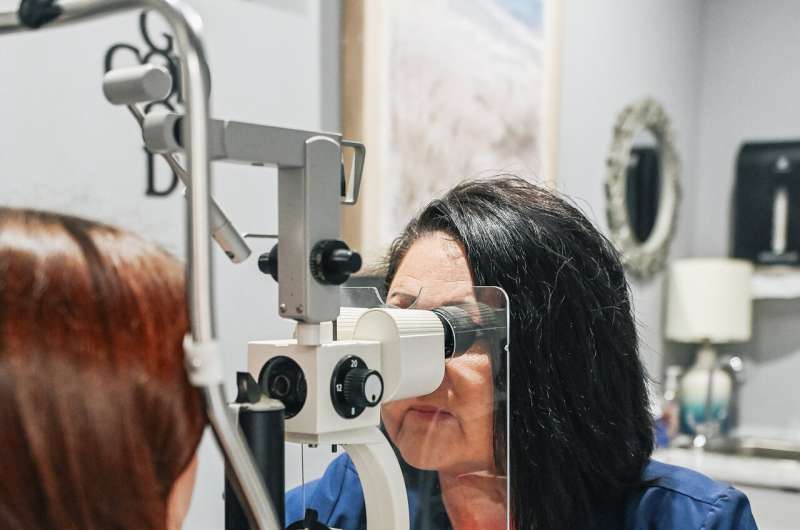This article has been reviewed according to Science X's editorial process and policies. Editors have highlighted the following attributes while ensuring the content's credibility:
fact-checked
reputable news agency
proofread
Make eye exams part of the back-to-school checklist. Your kids and their teachers will thank you

When a little boy burst into tears in her third-grade classroom last fall, Audrey Jost pulled him aside while the other kids were at recess. He said he was getting headaches and falling behind the other students, so Jost spoke with his parents about getting his eyes tested.
A few days later the boy returned with contact lenses, seeming like a different kid, said Jost, who teaches in a public school in Gilbert, Arizona.
"It was amazing, just the change that that had in him, academically, socially," she said. "He just lit up that day."
In her 18 years of teaching, Jost said she's seen this problem—and its relatively simple solution—many times before, including with one of her own daughters.
That's why experts say late summer is a great moment to add an eye test to the back-to-school checklist.
Vision problems often go undiagnosed
The American Optometric Association says 1 in 4 children start school with some sort of vision problem, impairing their ability to learn, participate in sports and observe the world around them.
But many kids won't tell you something is wrong because they don't know they have a problem, said Annette Webb, an optometrist in Hot Springs, Arkansas.
"They don't have anything to compare it to," said Webb, who recounted a story about a boy who loved to draw trees but had never seen individual leaves until he got glasses. "They think everybody sees like they do."

Many children with undiagnosed vision issues can develop behavior problems because they are predisposed to be disengaged. They might seek to entertain themselves, thereby disrupting the class. Or they could be perceived as copying a neighboring student's work, but really they can't see a math problem on the board, Webb said.
"Don't initially just assume they're cheating all the time," Webb said. "If somebody's habitually looking at a neighbor's paper, then I would definitely say that's a red flag."
How to spot a vision issue
Other indicators parents and teachers should look out for are squinting, requests to move around the classroom and headaches, particularly ones during the afternoon that are likely caused by eye strain.
"Any complaints of any sort, saying they can't see, rubbing their eyes a lot, if they have red eyes, if they're bumping into things, they should get checked," said Megan Collins, an ophthalmologist at Johns Hopkins University.
Collins emphasized that vision screenings, which are mandated in most states, are an important first step to identifying kids with potential eye problems. As a public health researcher, she advocates for strengthening in-school vision programs to help address disparities in access to screenings and eye exams in underserved areas.
But she said the end of summer is still a good time to remind families about the importance of vision for learning. A good place to start is at yearly check-ups with a pediatrician, who should do a routine vision screening that will detect kids at risk for the most common ailments.
She said the exceptions are children with a family history of eye problems or diseases that can affect the eye, such as diabetes, or kids who take medications with potential side effects. They should have a proper eye exam every year.

How to access eye care
If you don't have a vision plan or can't afford glasses, check with the school nurse. Some schools, particularly in large cities and underserved areas, have programs to provide eye exams and glasses for free.
There are also many private programs offering discounts or free glasses to low-income families, such as civic associations like the Lions Club International or VSP Eyes of Hope, offered by one of the largest vision insurance providers.
Once any issue is corrected, the key is for parents and teachers to communicate to make sure kids are wearing their glasses, Collins said.
Luckily, the old stereotype of the four-eyed nerd in the Coke-bottle glasses doesn't have the power it used to.
"The exciting thing is that in a school setting, kids tend to enjoy wearing glasses these days," she said. "They like the styles and colors, which is much different from when I was a kid."
© 2024 The Associated Press. All rights reserved. This material may not be published, broadcast, rewritten or redistributed without permission.



















